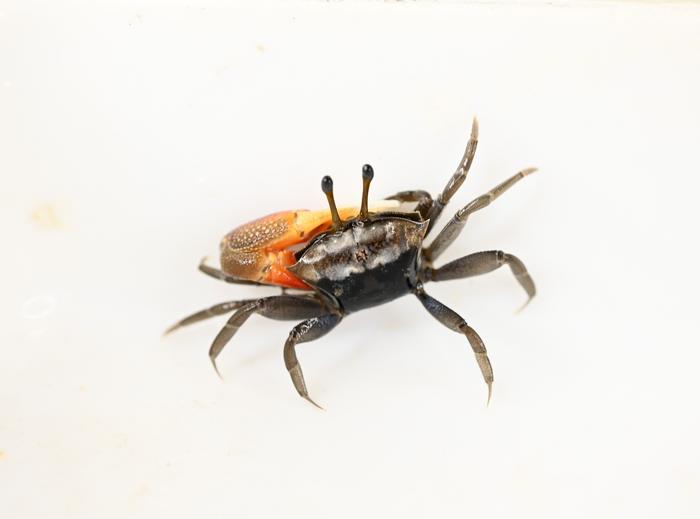Researchers from the School of Biological Sciences (SBS) and the Swire Institute of Marine Science (SWIMS) at The University of Hong Kong (HKU), in collaboration with National Chung Hsing University, have made an exciting discovery on the Hong Kong coast. They have identified two fiddler crab species: Tubuca dussumieri, previously recorded in old literature but never confirmed in recent times, and Tubuca. coarctata, which has never been seen in Hong Kong. These findings, published in the scientific journal Zootaxa, not only confirm the presence of these insular species in Hong Kong but also explore the potential impact of climate change on their distribution.

Credit: The University of Hong Kong
Researchers from the School of Biological Sciences (SBS) and the Swire Institute of Marine Science (SWIMS) at The University of Hong Kong (HKU), in collaboration with National Chung Hsing University, have made an exciting discovery on the Hong Kong coast. They have identified two fiddler crab species: Tubuca dussumieri, previously recorded in old literature but never confirmed in recent times, and Tubuca. coarctata, which has never been seen in Hong Kong. These findings, published in the scientific journal Zootaxa, not only confirm the presence of these insular species in Hong Kong but also explore the potential impact of climate change on their distribution.
T. dussumieri is a very rare species in China. In this study, Dr Pedro JIMENEZ and Professor Moriaki YASUHARA from SBS and SWIMS, along with their colleagues, confirmed the presence of this species, making this the only verified record in Hong Kong. On the other hand, T. coarctada was recorded for the first time not only in the city but also in continental Asia.
The researchers propose that these warm-water species, typically found in the Pacific islands, such as the Philippines, Taiwan, and the Ryukyus Islands in Japan, may have reached the Chinese coasts due to rising sea temperatures. In these island areas, a powerful ocean current known as the Kuroshio current flows northeastward, bringing warmer tropical waters and creating significantly warmer conditions compared to the cooler coastal waters of China. As sea temperatures have risen, these warm-water species may now be able to expand their range and colonise the shores of China, where the waters have also become warmer over time.
They suggest that as global temperatures continue to rise, the larvae of T. dussumieri and T. coarctada are more likely to reach Chinese coasts. This could lead to possible new introductions or reintroductions of these species.
‘The two species are insular because the comparatively warm waters brought by the Kuroshio currents to the east of the Philippines and south of Taiwan are favourable for their larvae survival. With the warming of the Chinese coastal waters, larvae of these species can survive and be transported from Taiwan and the Philippines into coastal China,’ said the lead author, Dr Pedro Jimenez.
The researchers also highlight the importance of environmental conservation for these species in China. Hong Kong’s wetlands have experienced rapid coastal degradation due to land reclamation and infrastructure developments, posing a threat to local fiddler crab populations. Protecting these coastal area is crucial for the survival of these newfound species.
About the research paper: Confirming the occurrence of two fiddler crabs, Tubuca dussumieri (H. Milne Edwards, 1852) and T. coarctata (H. Milne Edwards, 1852) (Crustacea: Decapoda: Ocypodidae), in Hong Kong by DNA barcoding and morphology. PEDRO JULIÃO JIMENEZ, KAI CHANG, HSI-TE SHIH, MORIAKI YASUHARA.
The journal paper can be accessed from here:
For media enquiries, please contact Ms Casey To, Assistant Manager (Communications) (tel: 3917 4948; email: caseyto@hku.hk / Ms Cindy Chan, Assistant Director of Communications of HKU Faculty of Science (tel: 3917 5286; email: cindycst@hku.hk).
Journal
Zootaxa
Method of Research
Experimental study
Subject of Research
Not applicable
Article Title
Confirming the occurrence of two fiddler crabs, Tubuca dussumieri (H. Milne Edwards, 1852) and T. coarctata (H. Milne Edwards, 1852) (Crustacea: Decapoda: Ocypodidae), in Hong Kong by DNA barcoding and morphology
Article Publication Date
4-Jul-2024



